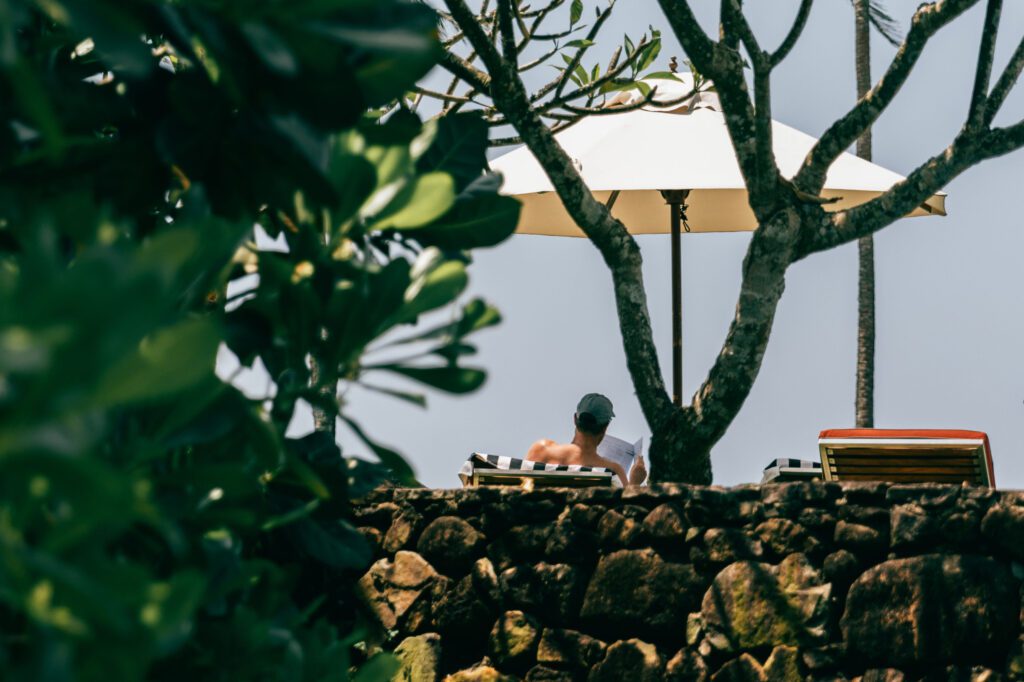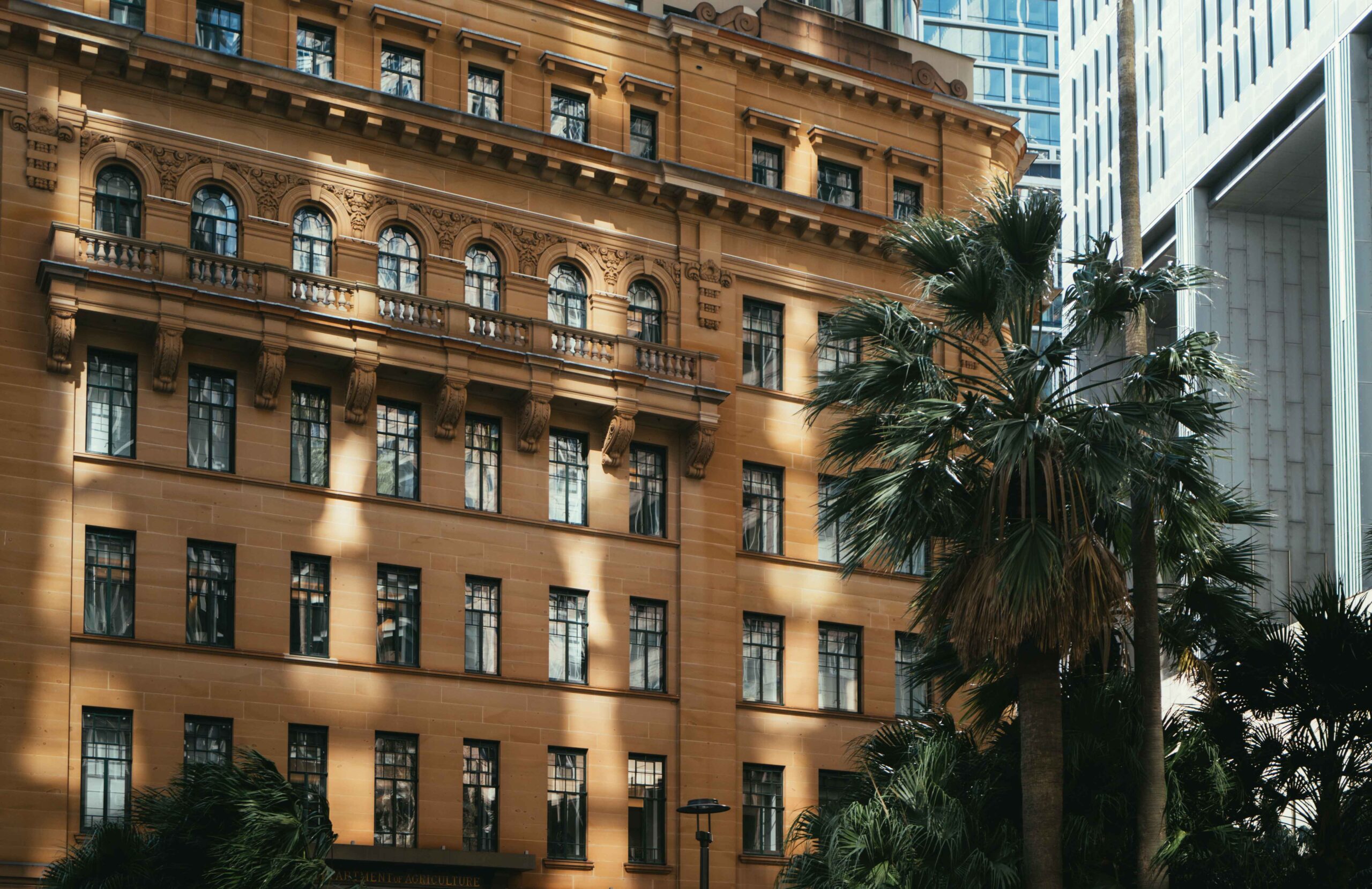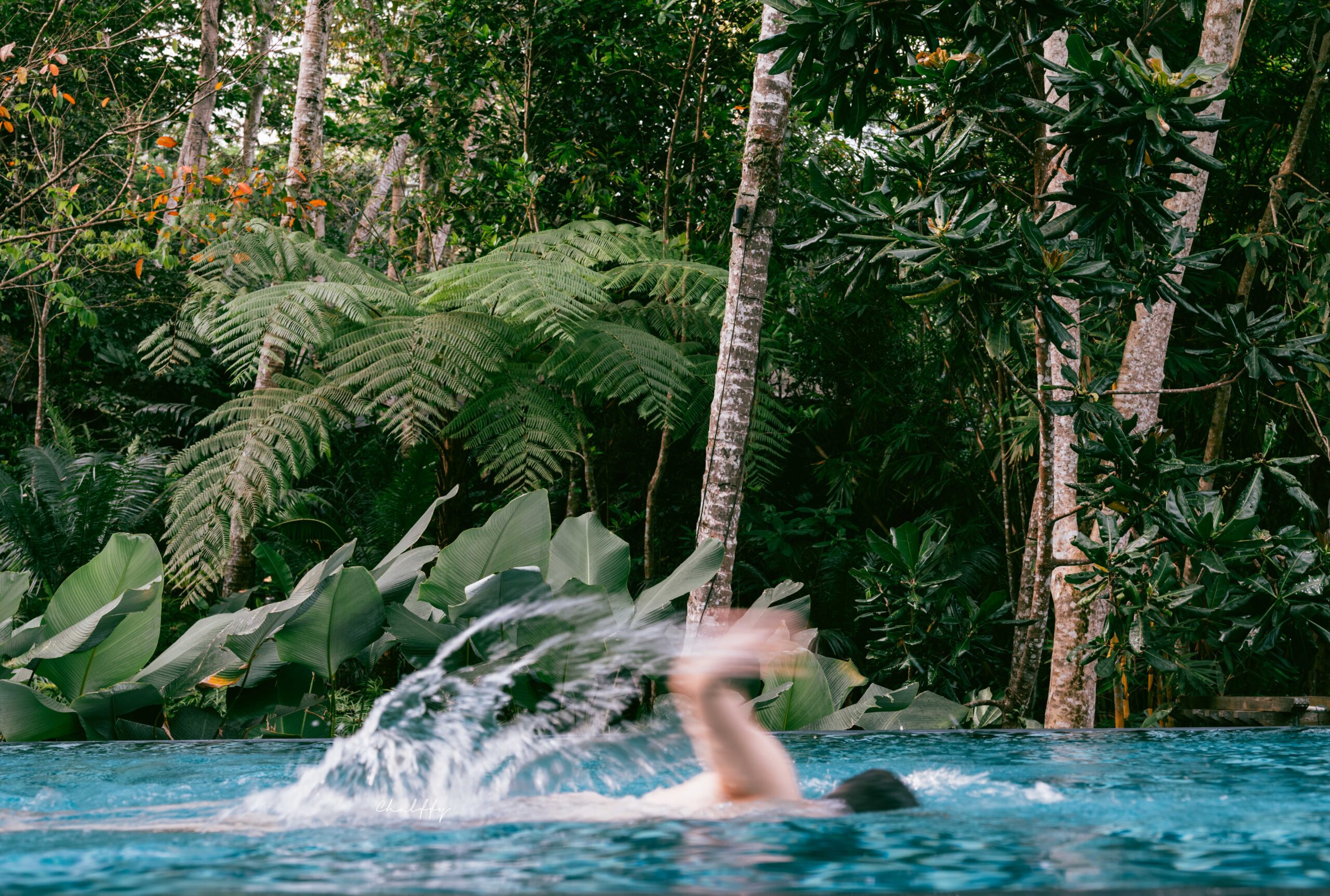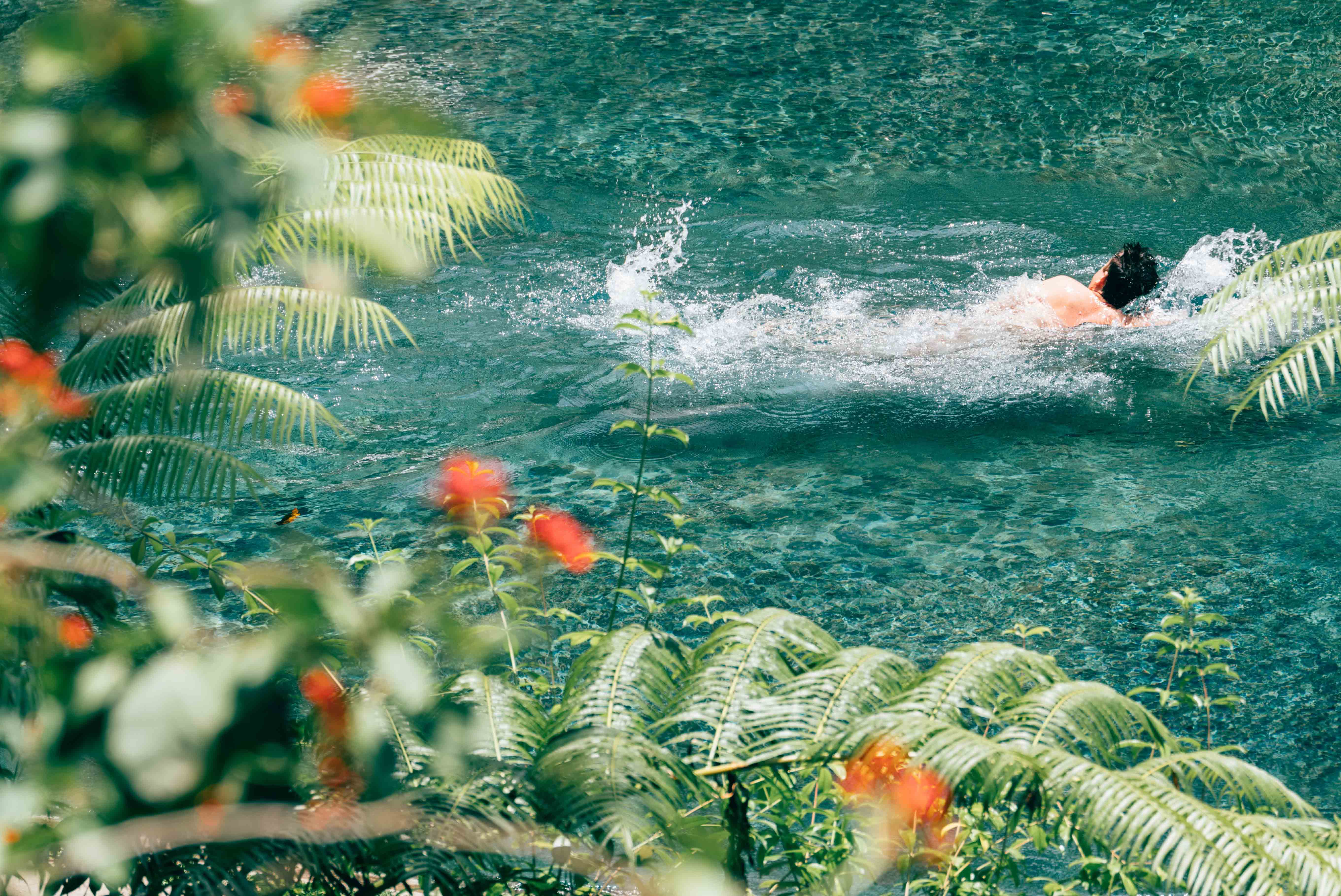A small island nation surrounded on all sides by the sea—what does the ocean truly mean to it?
I have long harbored a mysterious fascination with the word “border.” In my imagination, a border represents the limit of human understanding, and the stories that unfold there are imbued with a legendary allure. For Sri Lanka, its border is drawn along a lengthy, sinuous coastline that outlines a lustrous pearl; its modern history has been inscribed upon the beaches and capes, ceaselessly caressed by the tides of the Indian Ocean. For most isolated islands, the reach of the rolling waves marks almost the very edge of imagination.
During my journey in Sri Lanka, I devoted my journey entirely to the southwestern seaboard. From Galle to Weligama, these are the waters where the Indian Ocean surges with its fiercest energy. And yet, it is precisely in nature’s relentless embrace that life takes on its most distinctive form. Along this narrow strip of sea, vessels once laden with the hopes of Eastern and Western spice traders—carrying cinnamon, ivory, and peacock feathers—set sail; fleets from Portugal, the Netherlands, and Britain followed in succession, leaving behind not only a thorny rose in Sri Lanka’s historical tapestry but also the evocative name “Ceylon.” If every chapter of Sri Lanka’s past were a burst of fireworks, then the maritime legends of the southwest coast would be the brightest streaks across the night sky.
During my stay in Galle, I deliberately chose to reside at Cape Weligama—a living embodiment of the “ocean” in Sri Lanka as envisioned by Relais & Châteaux. I was curious to see how it would unfold the ancient tale between the sea and Ceylon.
It was the dry season along the southwest coast. In the afternoon, as I drove from the ancient citadel of Galle to Weligama, the air seemed to hold an everlasting hint of summer. Quaint towns and orderly fishing villages exuded a serene charm; beyond the car window, the Indian Ocean simmered beneath layers of lush greenery, a deep midnight blue. When the vehicle turned into a highland stretch lined with coconut groves, the entrance to Cape Weligama emerged quietly amid the dense silhouettes of trees. Accompanied by the calls of birds and the gentle cries of peacocks, its modest unveiling felt akin to visiting an old friend’s home, naturally slowing my pace.
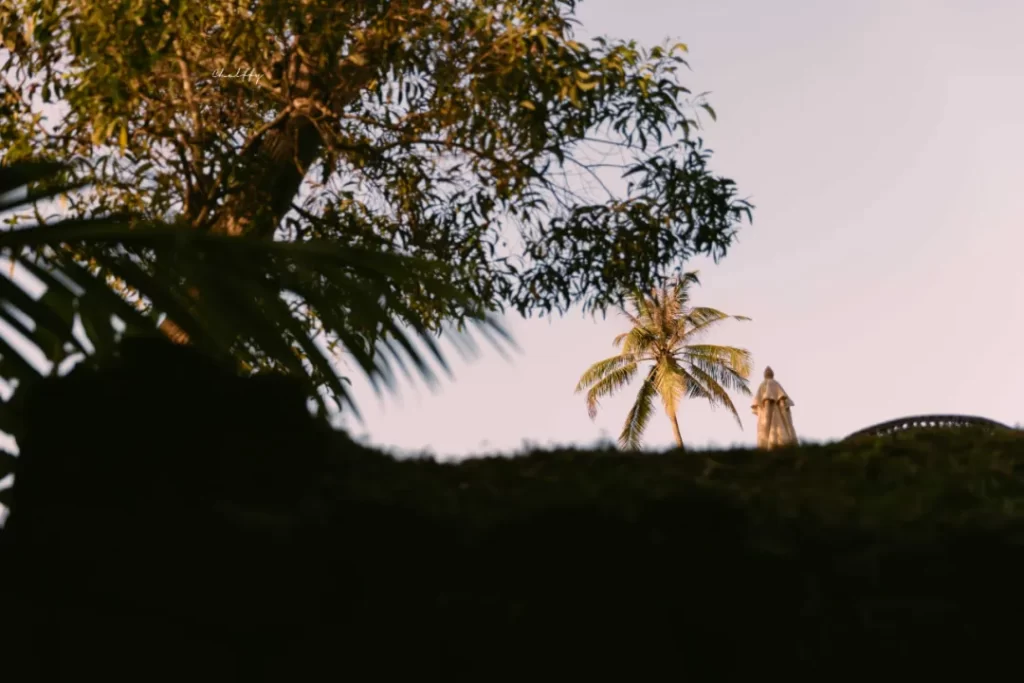
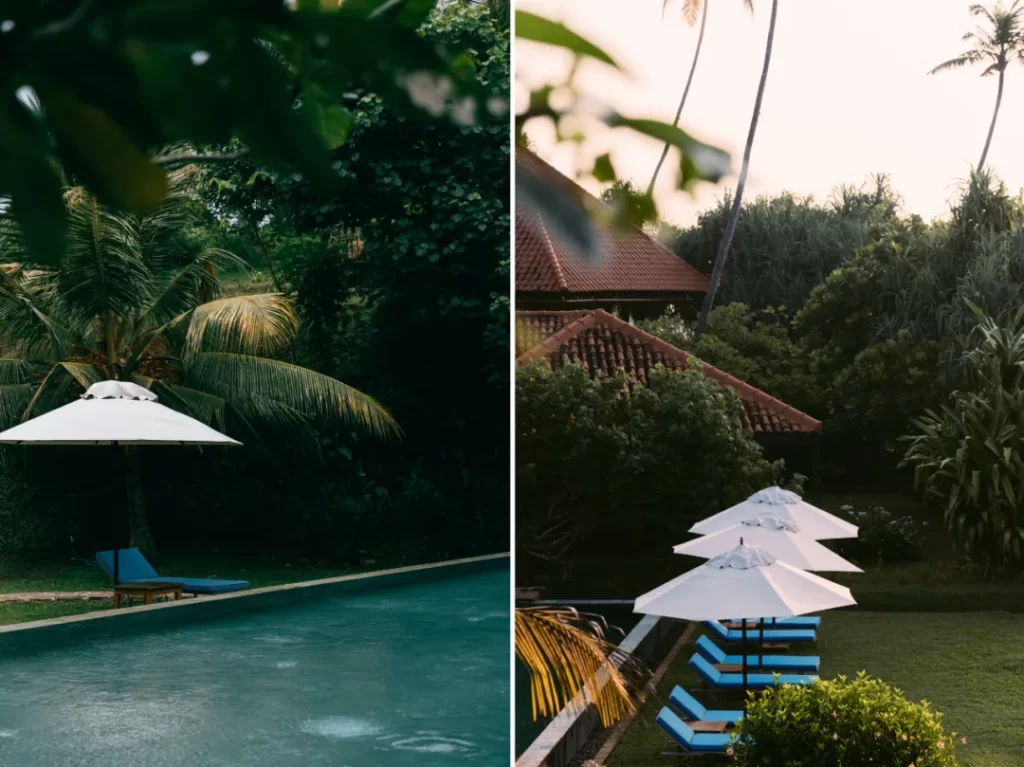
Rooms and pools nestled amidst the jungle.
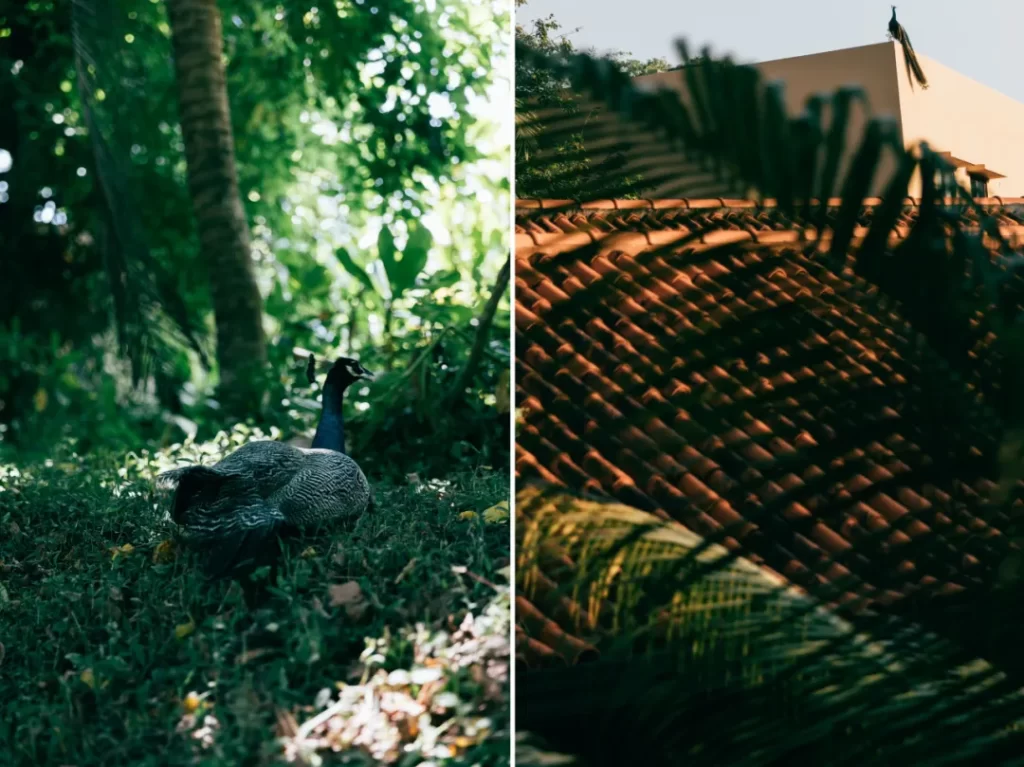
While strolling through the hotel, I often encountered wild peacocks tucked away in every corner.
This highland, in fact, is the cliff outside the town of Weligama—situated almost at the very southern tip of Sri Lanka. The hotel is perched on this cliff, embraced on three sides by the Indian Ocean. Stepping out of the reception, one follows a pathway undulating along the edge of the cliff, weaving between towering groves as if traversing a primeval forest. Glancing upward, sporadic red rooftops dot the canopy, resembling little boats adrift on the turquoise expanse beyond the town.
Each guestroom is a standalone villa tucked away deep within the foliage, where moss-covered stone walls discreetly separate private spaces from the corridors. This design not only preserves a haven of tranquility but also subtly delineates distinct little enclaves. In addition to two expansive communal pools, each enclave shares its own intimate pool. Even when viewed from above, despite the cliff plunging directly into the vast Indian Ocean, the hotel ensures that the presence of water is always palpable—seamlessly intertwining the living space with the ever-present pulse of the sea.
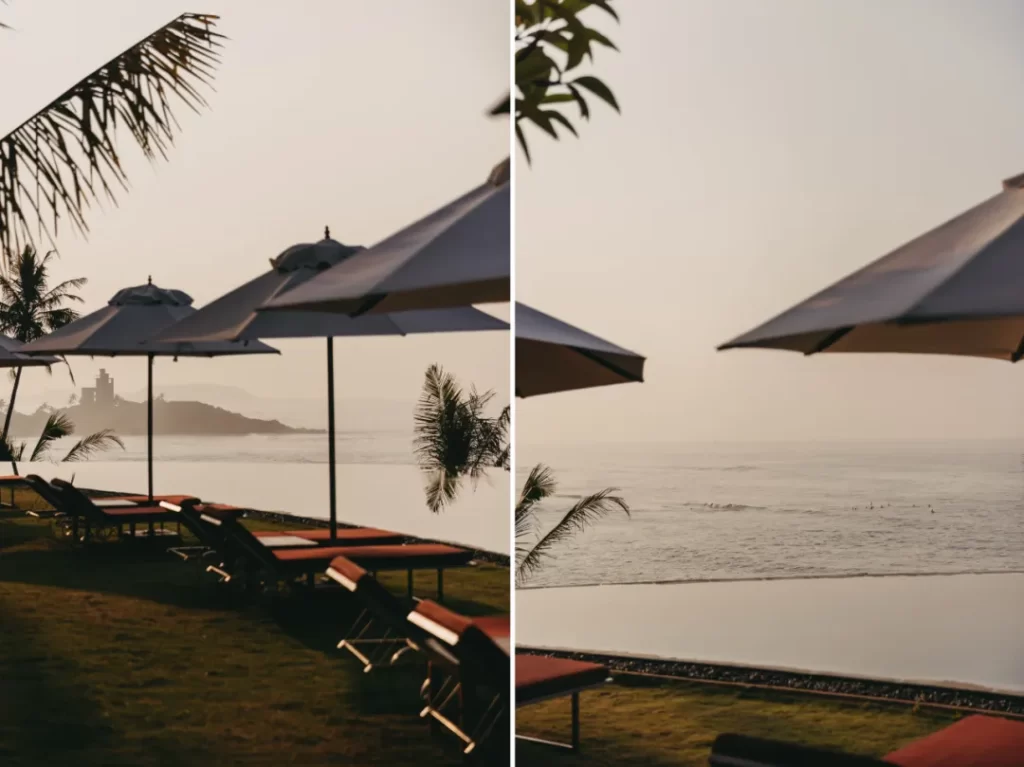
Bathed in the afterglow, the Moon Infinity Pool plunges deep into the Indian Ocean.
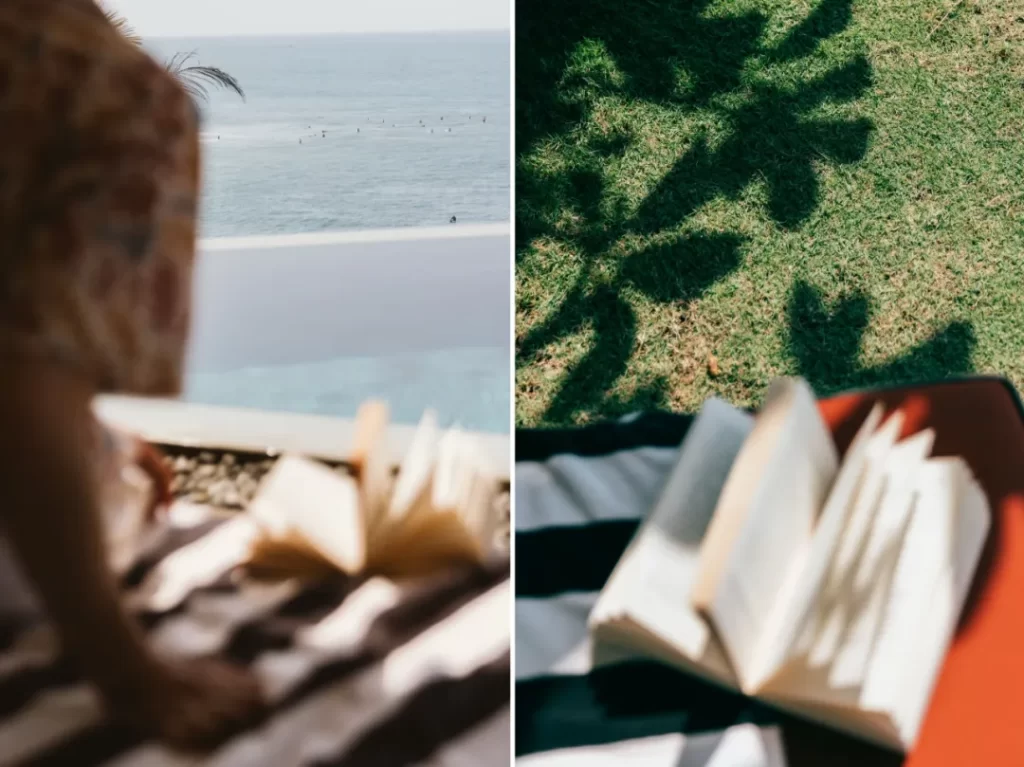
Endless summer on the Indian Ocean.

A small pool nestled in the dense shade.
At the entrance leading to the guest accommodations, plaques hang on the stone walls bearing the names of luminaries such as Ibn Battuta, Leonardo Wolf, and Neruda. These literary giants and explorers once set foot on Sri Lankan soil, leaving raw and vivid imprints of the island with their words and journeys. Their literary light, as gentle as moonshine, penetrated the dense canopy to reveal the unassuming life of this land to the world.
Sri Lanka’s history is replete with visitors from the distant depths of the Indian Ocean. Its uniquely advantageous location made it, as early as the era of King Dru of Solomon circa 1400 BC, an export hub for rare commodities such as ivory, peacock plumes, and cinnamon. Countless caravans from Arabia and China have left their mark upon this soil—even Zheng He, during his grand voyages, replenished and traded along the southern coast. In Europe’s Age of Discovery, Portugal, the Netherlands, and Britain each etched nearly five centuries of colonial legacy here, with the port cities along the southwest coast serving as windows through which outsiders first glimpsed Sri Lanka—a stage set for the confluence of diverse cultures.
In that era defined by maritime exploration and colonial expansion, the names carved into those stone walls remind us that even during times of feverish longing for distant lands, an understanding and respect for local culture—and the value of sincere human connection—remains our most precious treasure. To understand the world is not measured by what one possesses, but by one’s willingness to embrace and appreciate the richness of every culture encountered.
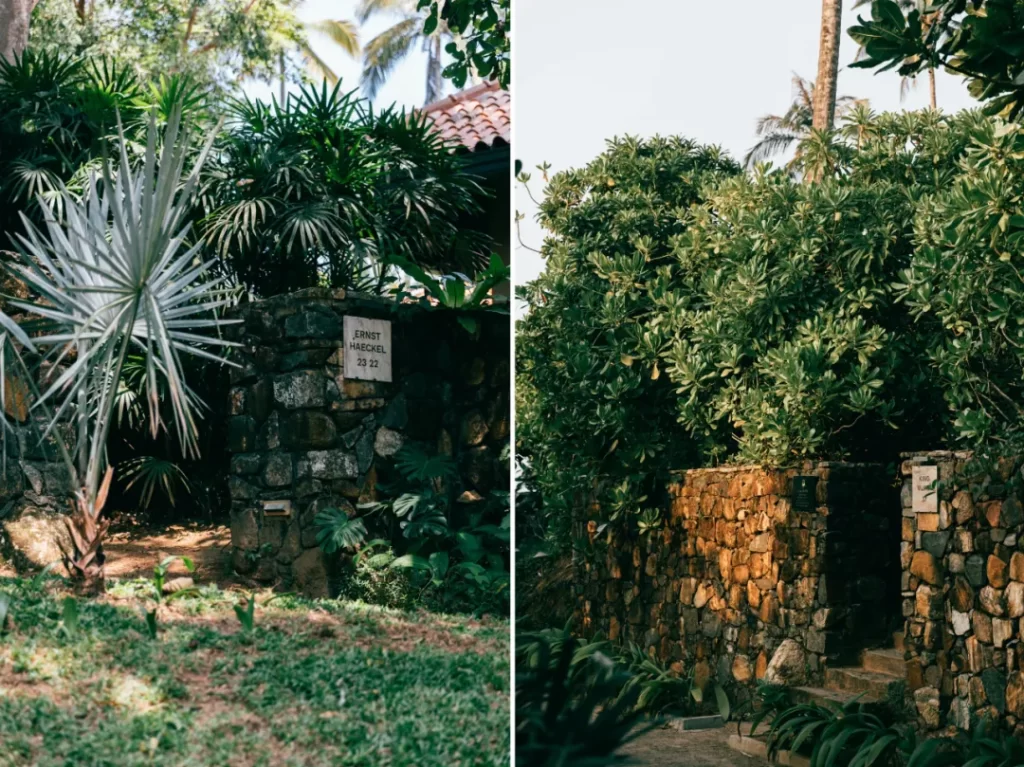
At the entrance to the room enclosed by stone walls, plaques commemorating legendary explorers are displayed.
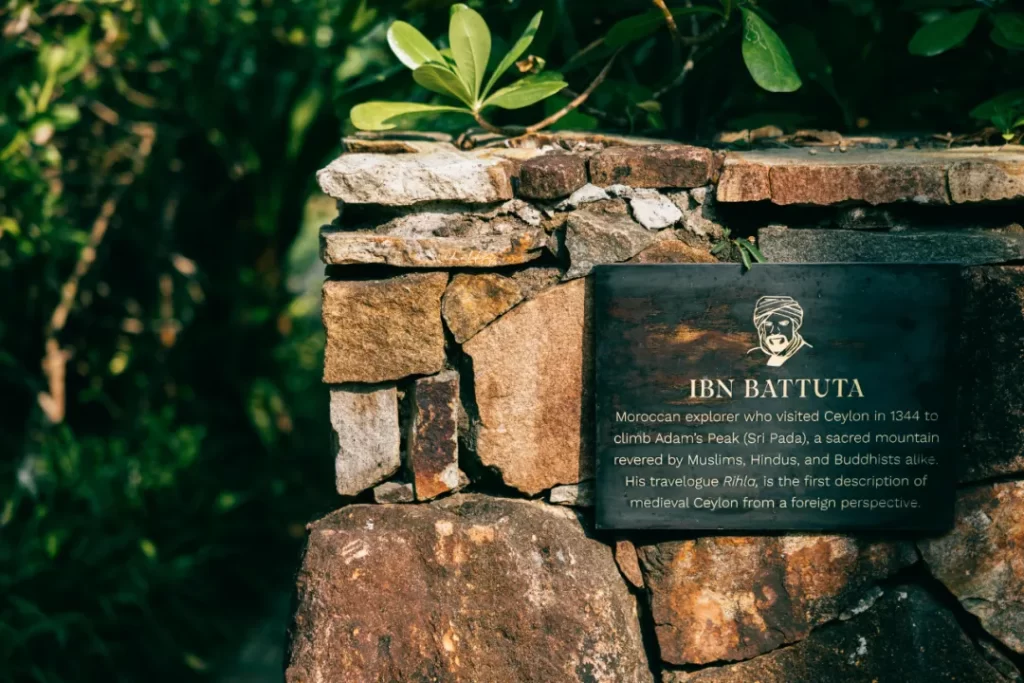
Ibn Battuta, the Moroccan explorer who once journeyed through Sri Lanka.
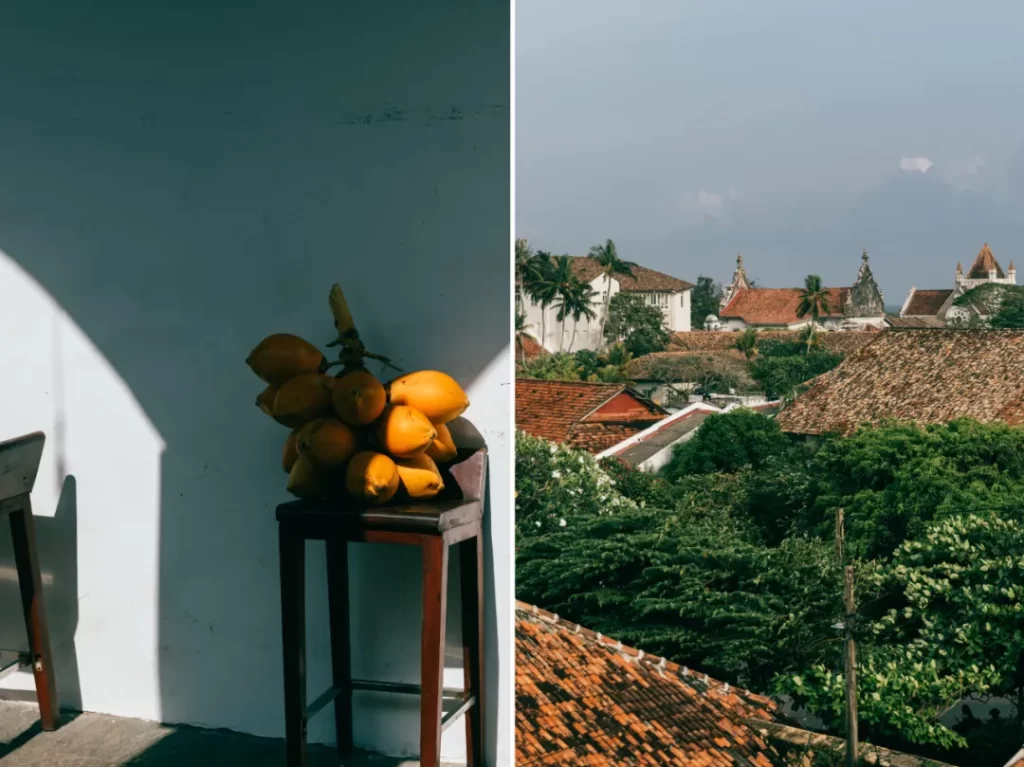
Just a thirty-minute drive from Cape Weligama, the old town of Galle still retains the original urban layout from the Dutch colonial era, remarkably well preserved through the centuries.

A peacock strutting through the old town of Galle, and a girl on the street—two fleeting scenes that quietly capture the spirit of everyday life amidst colonial echoes.
Each evening, I delighted in a leisurely stroll to the pool at the cliff’s edge, watching as the sun slowly sank into the Indian Ocean. The pool, curved like a slender crescent and clinging to the cliff, appeared to extend into the ocean’s depths. Coconut trees swayed gently in the sea breeze, while the distant, surging waves seemed to echo the ripples forming within the pool—a spectacle so magnificent it captivated the heart. I realized these very waves have welcomed countless distant travelers and have borne witness to the grand, romantic epics of global heritage engraved in Sri Lanka’s history.
Though the ocean’s golden age has long passed, those legendary names and stories remain forever etched upon enduring stone. Each morning, when I open my door, I am greeted by verdant valleys, the fragrance of blossoms, and the first light of dawn—as if ancient legends were quietly revived in the morning glow, diffusing through the jungle and reigniting the dreams of setting sail once more. In this seemingly ever-distant world, Cape Weligama, with its seamless fusion of local culture and global spirit, stands as an eternal beacon amid the vast sea.
Ahead lies the boundless ocean and an unknown journey; behind, only home remains.
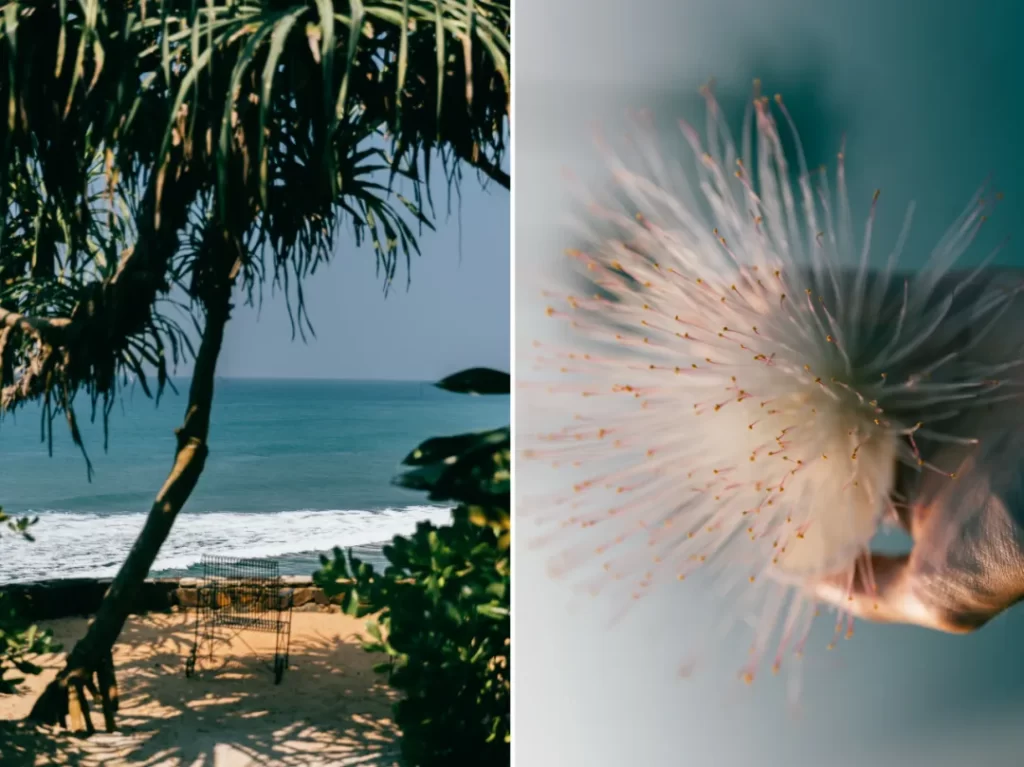
The hotel offers numerous scenic vantage points, each revealing a sweeping view of the majestic Indian Ocean.
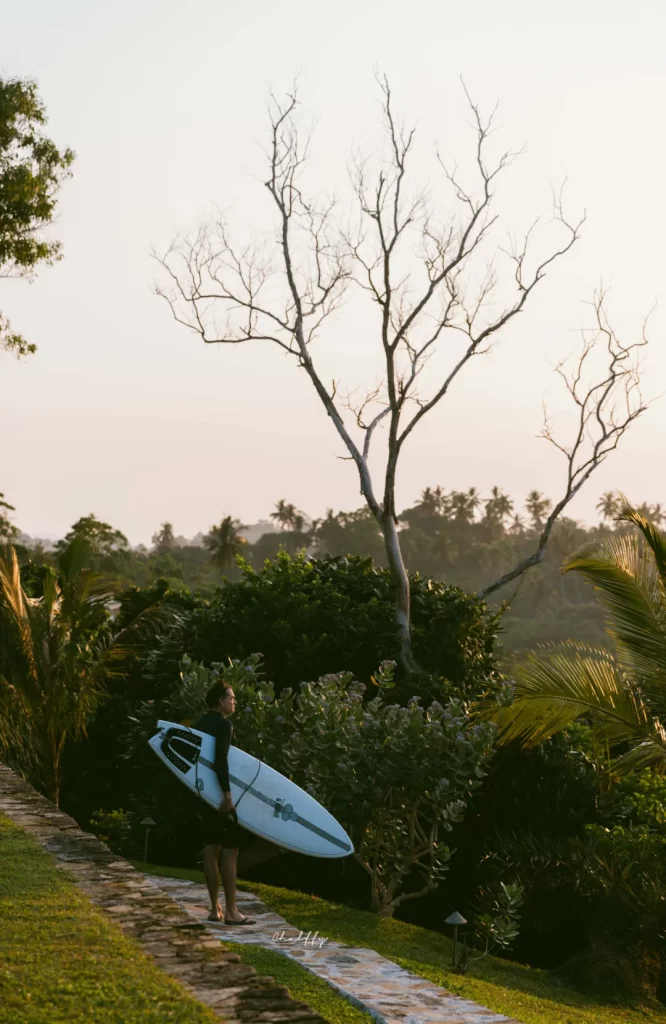
Weligama, meaning “Sandy Village,” is named after its fine sandy bays and ideal surfing conditions. Within the hotel grounds, a private pathway reserved for guests leads down to a secluded beach, perfect for surfing.
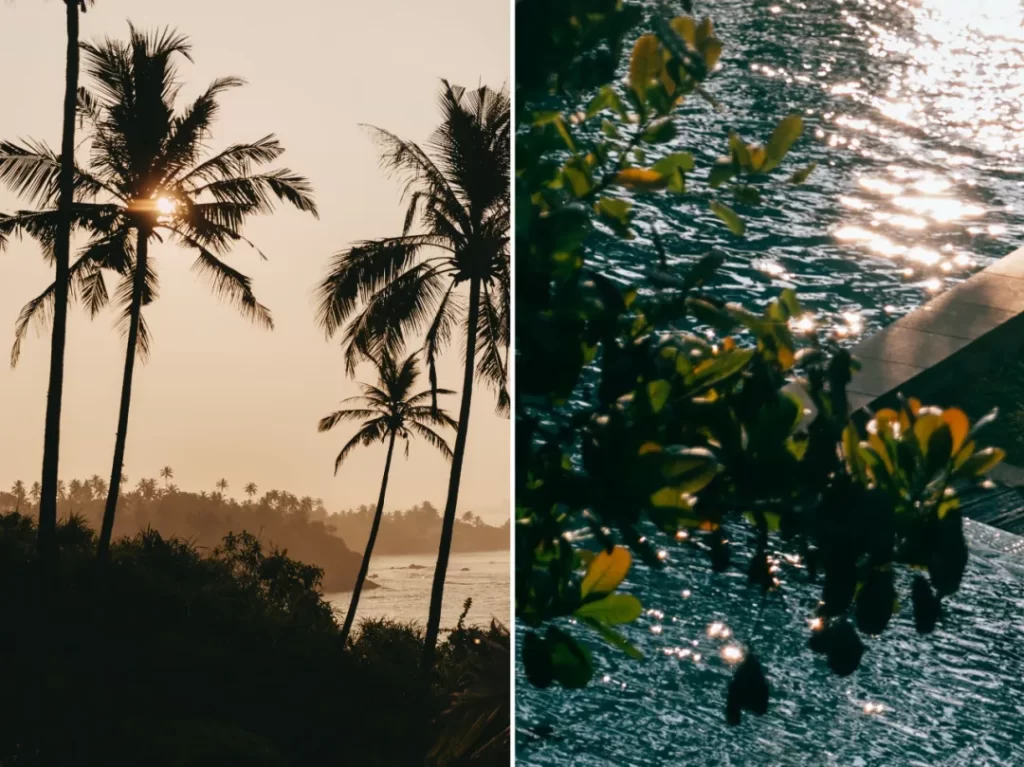
Facing the Indian Ocean, the hotel offers a front-row seat to the golden hues of sunset, all without leaving the property.
In Sri Lanka, life is defined by three elements: tea, the wild, and the sea. The three Relais & Châteaux hotels on this land each interpret the elegance of tea, the raw spirit of the wilderness, and the immensity of the ocean in their own unique ways—with Cape Weligama serving as the most vivid embodiment of the sea. They belong to the Fernando family’s Resplendent Ceylon, the same family that forged the globally renowned Ceylon tea brand, Dilma. Today, Dilma owns Sri Lanka’s finest tea estates—situated in the most favorable growing regions—and has integrated printing and packaging operations, standing as a flag-bearer for the island’s tea industry.
Reflecting on the 1950s, in the wake of the end of colonial rule, Sri Lankan tea was shipped en masse to London, where it was auctioned off at low prices to major companies from Europe, Britain, and the United States. By consolidating small family enterprises that once exported premium tea to the West, these intermediaries came to dominate the entire tea industry. Such an economic system gradually relegated Ceylon to merely being a supplier of raw materials. It was under these circumstances that Merrill J. Fernando envisioned a revolutionary idea—to package tea grown, hand-picked, and meticulously processed in Sri Lanka right at its source, presenting it directly to global consumers. In doing so, the tea not only retained its unique terroir to the fullest extent but also opened a brand-new path to livelihood for thousands of vulnerable individuals and many more Sri Lankans.
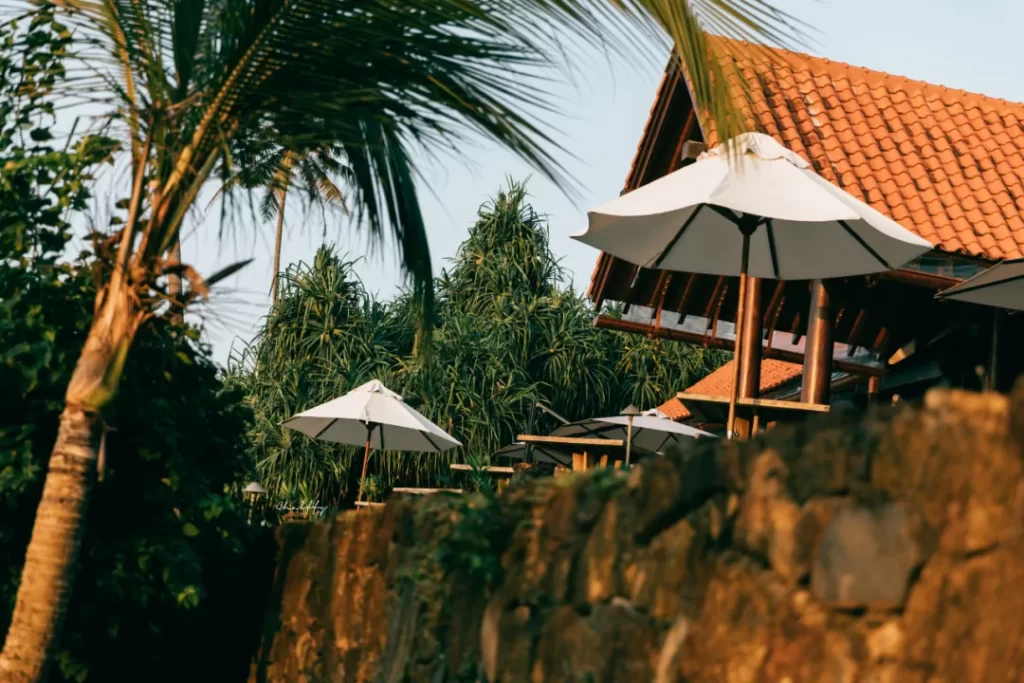
The hotel was designed by the renowned Thai architect Lek Mathar Bunnag, often hailed as the “father of modern Thai architecture” and a national design treasure. His philosophy emphasizes harmonizing contemporary architecture with local cultural heritage and the natural environment, aiming to create spaces that are both artistically striking and functionally refined.
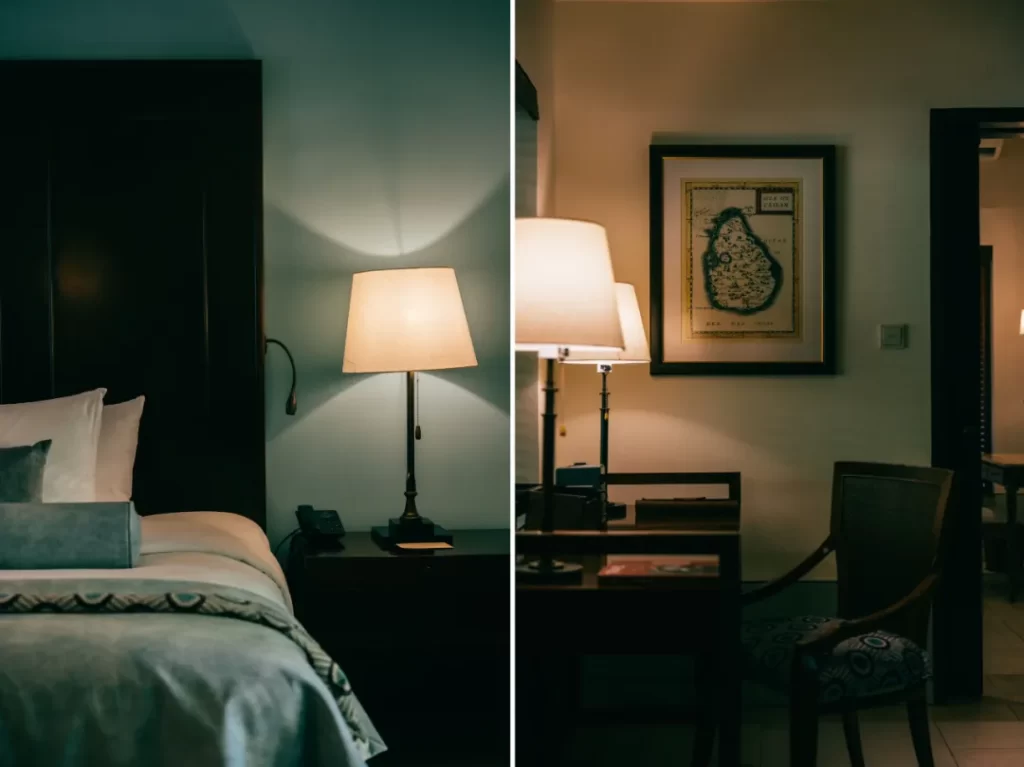
The hotel’s interiors retain the distinct character of Sri Lankan design, featuring South Asian decorative elements that reflect the region’s cultural heritage.
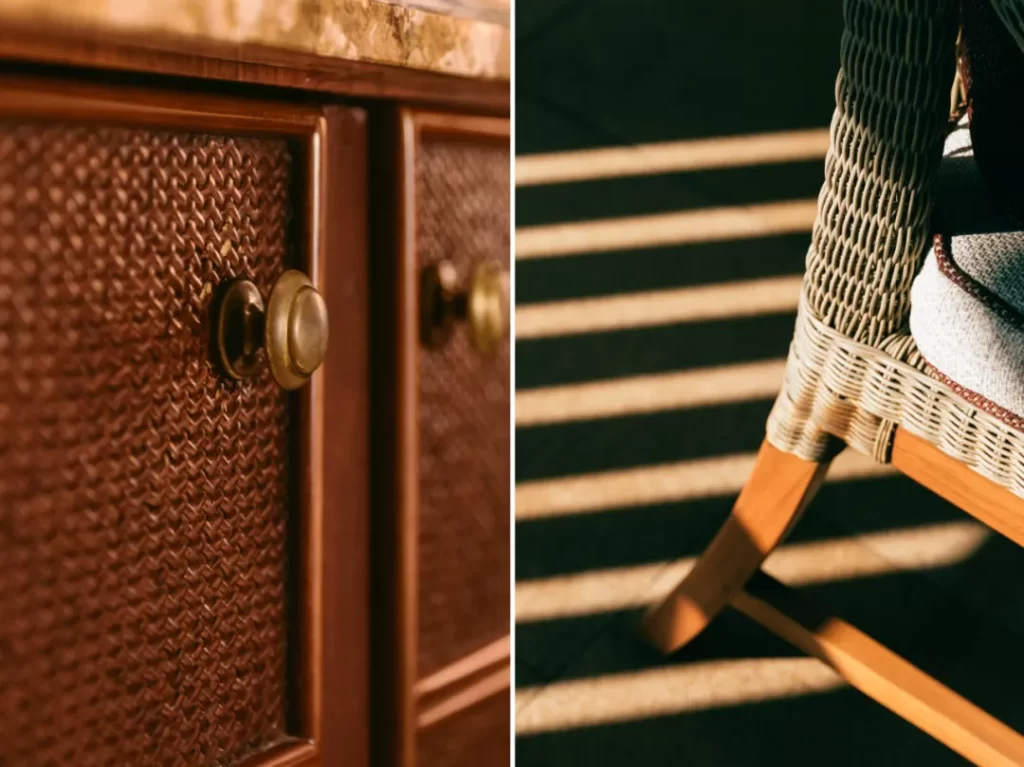
The details and lighting in the room
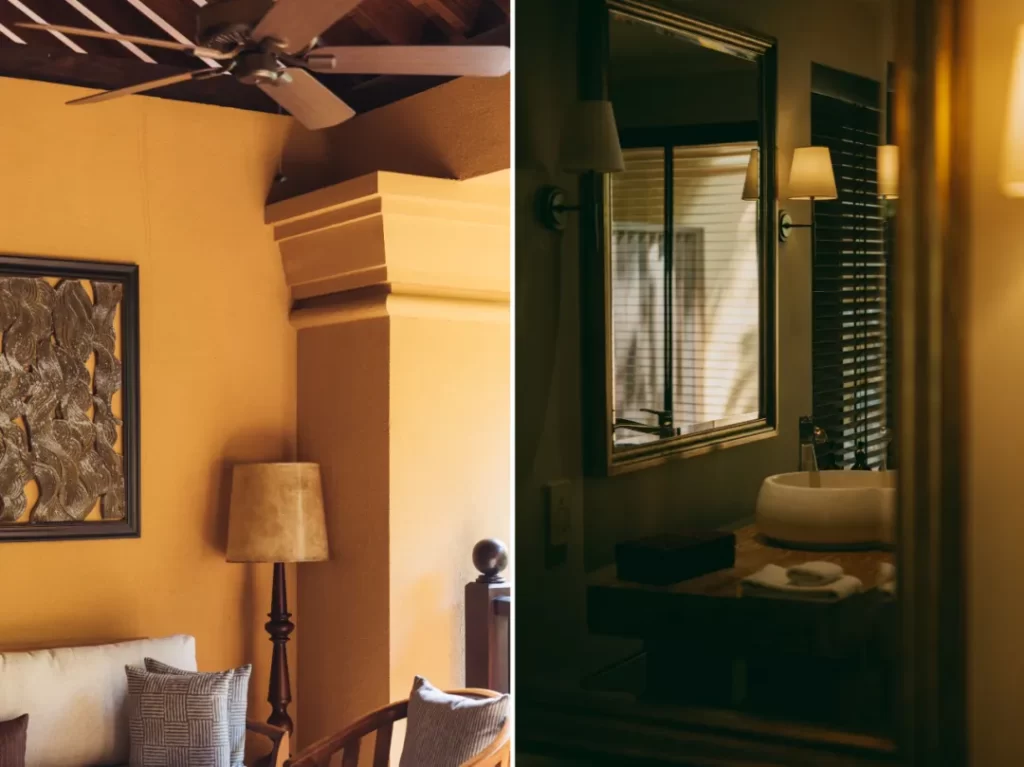
The terrace outside the room, with its elegant shades of brown and the dense green of the mountains, creates an atmosphere of refined mountain living.
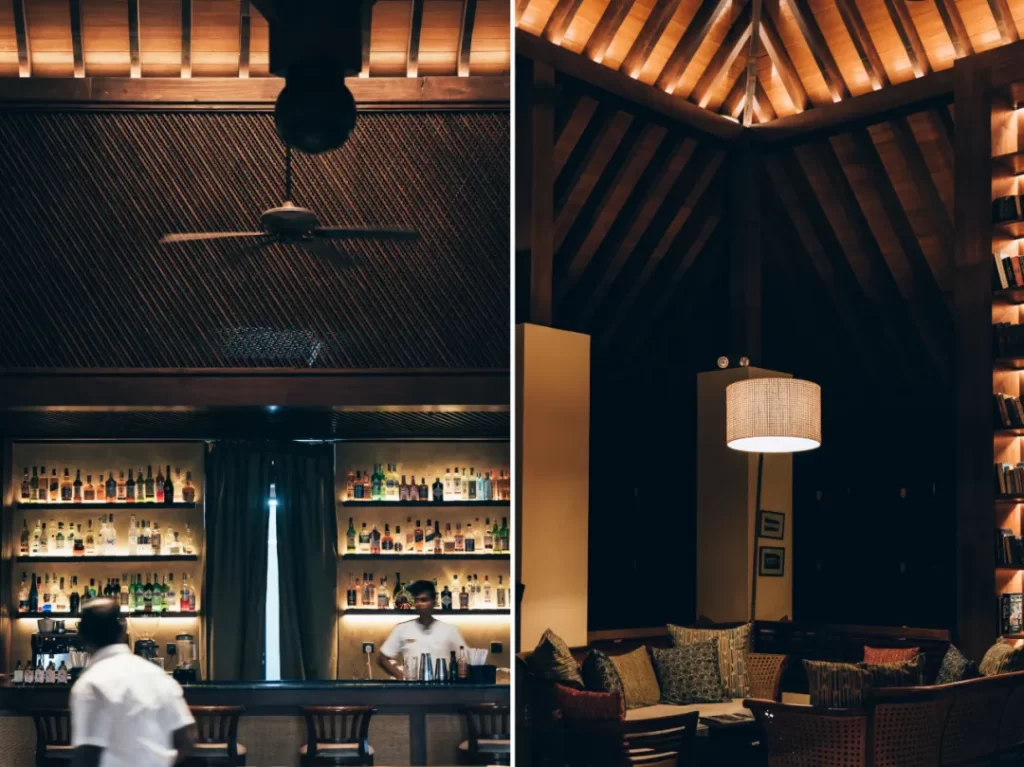
The hotel’s bar and communal gathering space—The Society—features cuisine, drinks, a billiard room, books and newspapers, conversation, and artwork. Every element harmoniously recalls the gathering rooms of early explorers, recreating the atmosphere of cross-cultural exchange from that era.
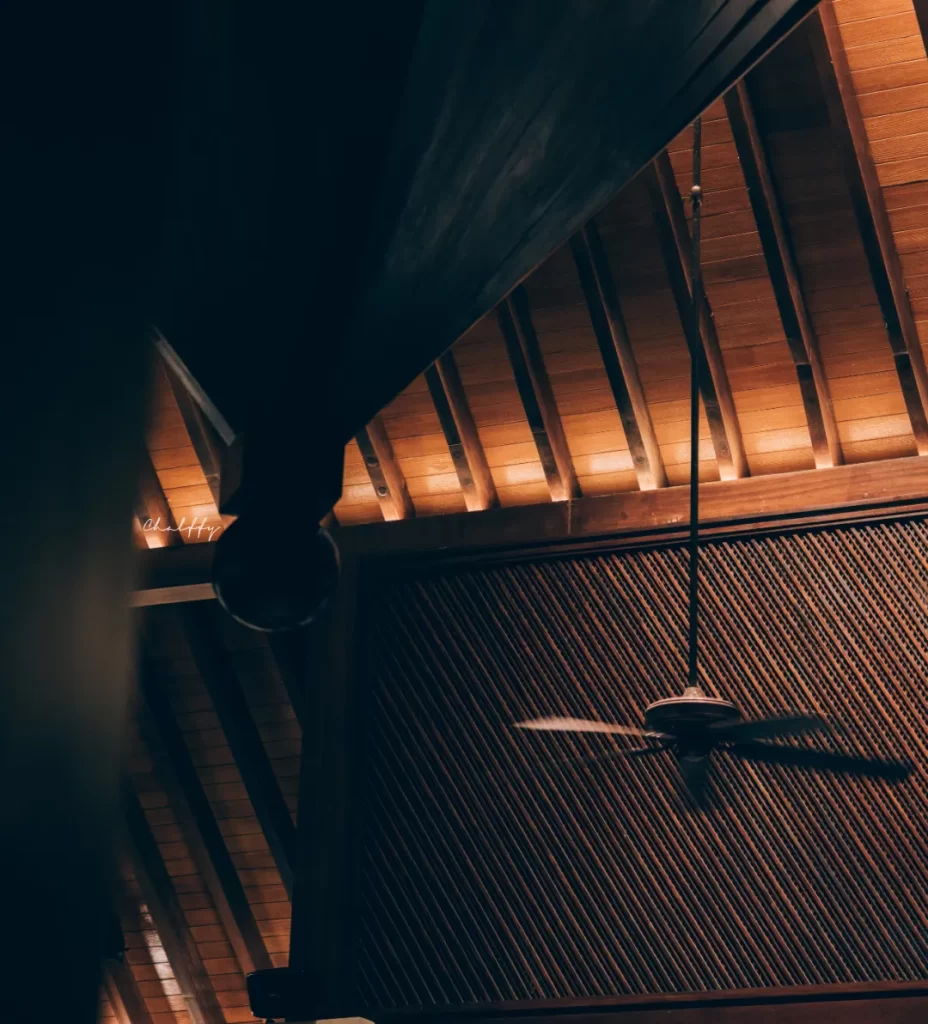
The design of the bar’s ceiling, with its wooden structure and fans, is both elegant and timeless.
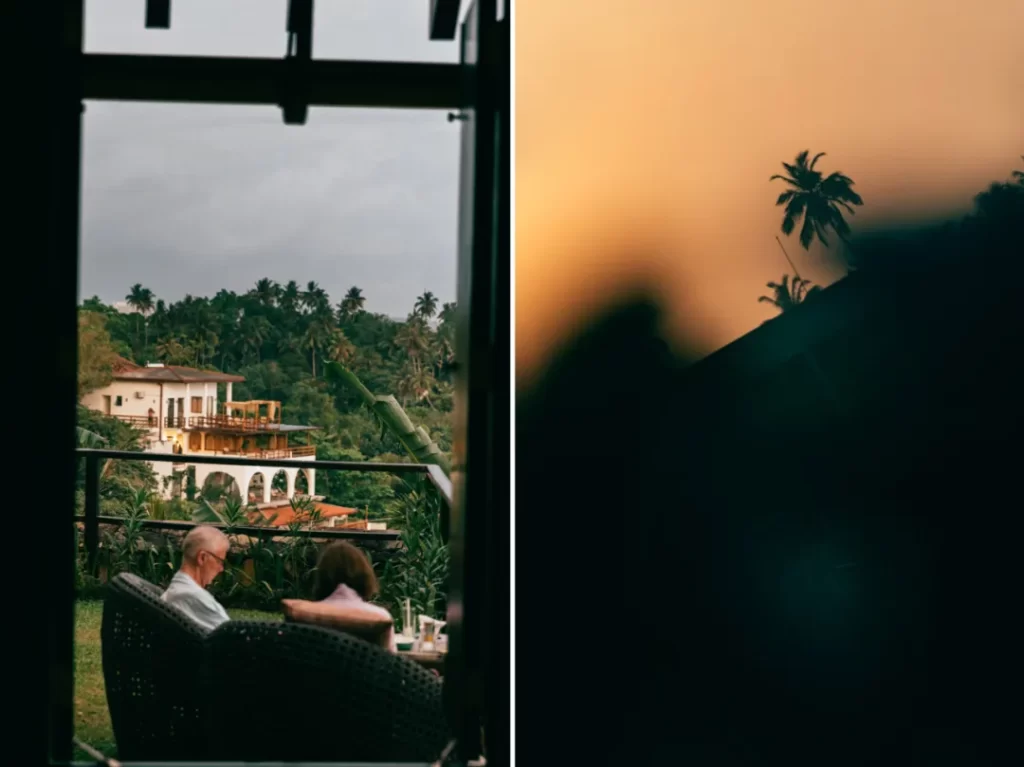
Outside the windows of The Society, the lush, sprawling mountains extend endlessly.
As a property under the Relais & Châteaux umbrella, cuisine naturally becomes an inseparable topic at Cape Weligama. In keeping with Relais & Châteaux’s belief that true luxury is found in the art of taking time to appreciate nature’s tranquility, the hotel’s two restaurants offer culinary experiences that gracefully fuse local flavors with global influences.
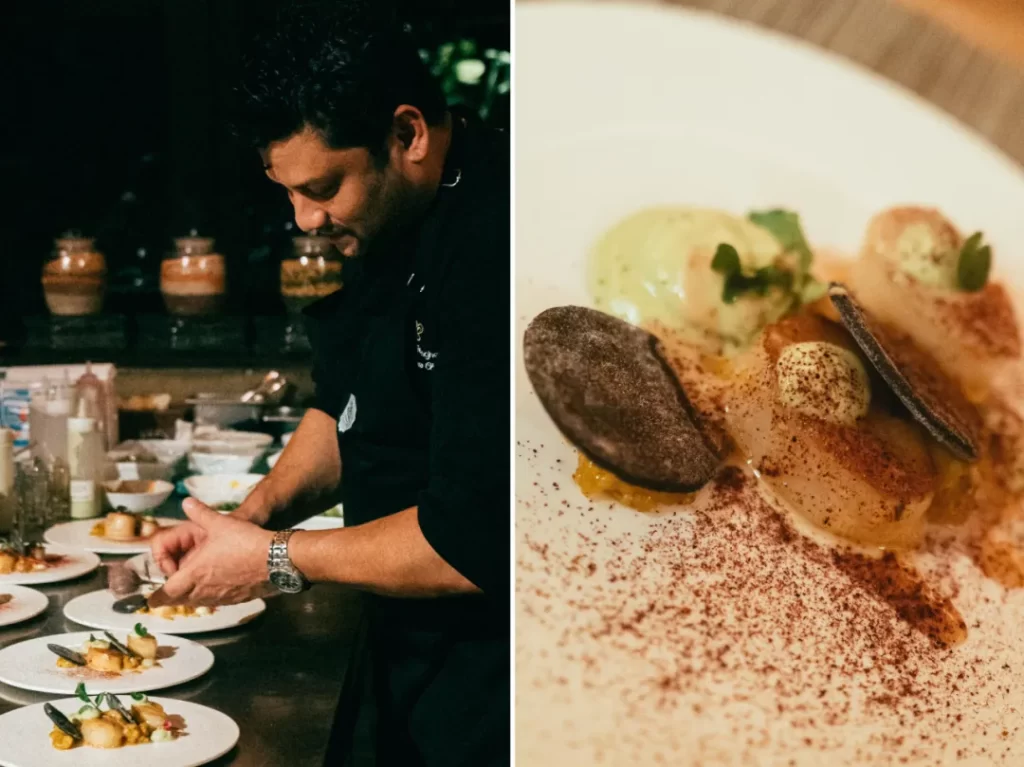
The menu at Chef’s Table is inspired by the various spices native to Sri Lanka.
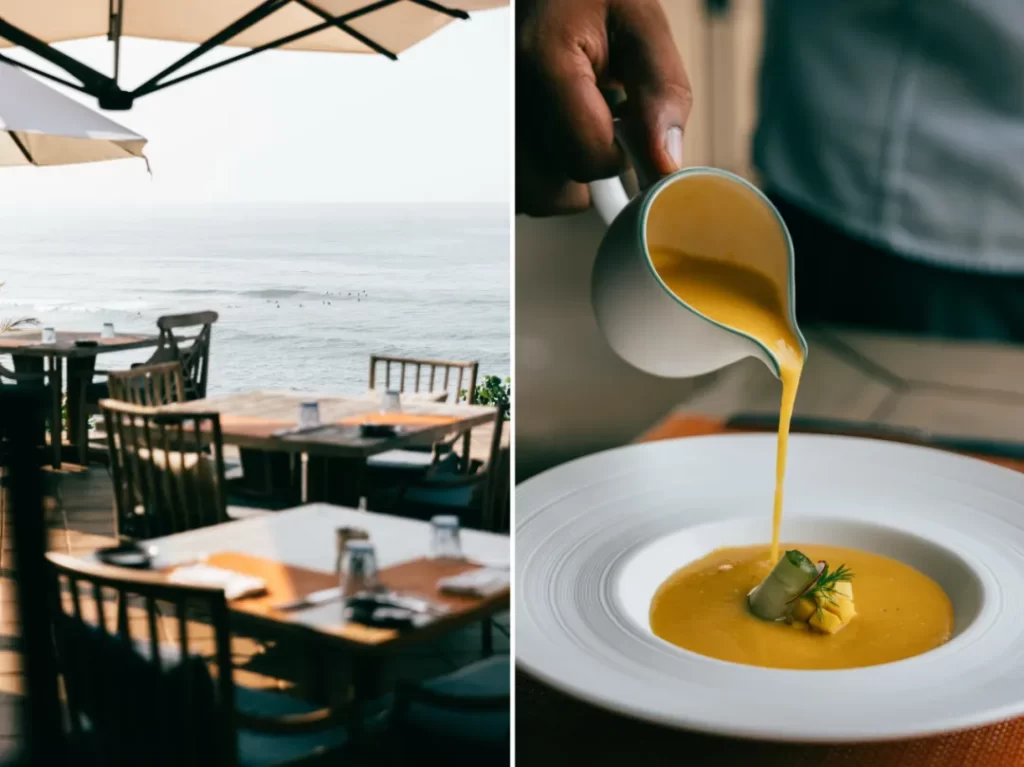
At Atlas Restaurant, you can enjoy exquisite cuisine while seated by the edge of the Indian Ocean.
During my several days at Cape Weligama, I became accustomed to an enveloping silence—broken only by birdsong and the distant sound of waves crashing against the cliff below. In modern-day Sri Lanka, the ocean may have lost its symbolism as a threshold of arrival or departure; it is simply the backdrop for daily life and livelihood. Standing at the cliff’s edge, gazing out over the Indian Ocean, it feels as though the entirety of Sri Lanka lies behind me, with nothing but the wild wind and intrepid souls chasing the waves ahead.
Amid the confluence of Eastern and Western cultures, today’s Sri Lankans seem remarkably nonchalant about the far-flung maritime adventures that once unfolded around them. Once at the very center of global seafaring exploits, they now focus on the quiet rhythms of their own daily lives. And yet, when encountering a curious stranger, they cannot help but offer a genuine smile or a simple inquiry: “Sir, where do you come from?” Perhaps this stems from their ancestors’ time-honored hospitality toward distant mariners, or perhaps, as expert cultural amalgamators, they still harbor an innate longing for adventure. Anchored by a rich past, they clearly understand both the legends that swirl in the surrounding waters and the expectations once bestowed upon their land—making their present tranquility all the more profound.

